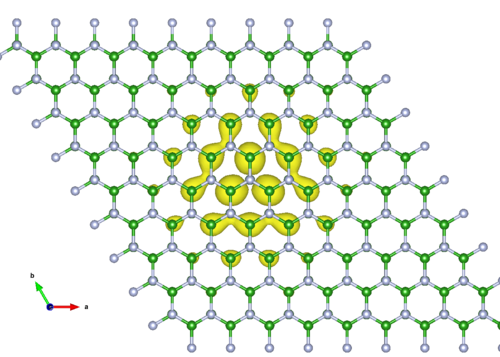Plotting exciton wavefunction
The exciton wavefunction can be written as and depends on coordinates of a hole as well as an electron, thus two coordinates. In order to represent this function in 3D space we need to fix either the position of the electron $\psi_\lambda(r^*_e,r_h)$ or that of the hole $\psi_\lambda(r_e,r^*_h)$

Related tags and sections
CHGCAR, NBSEEIG, BSEHOLE, BSEELECTRON, BSE
